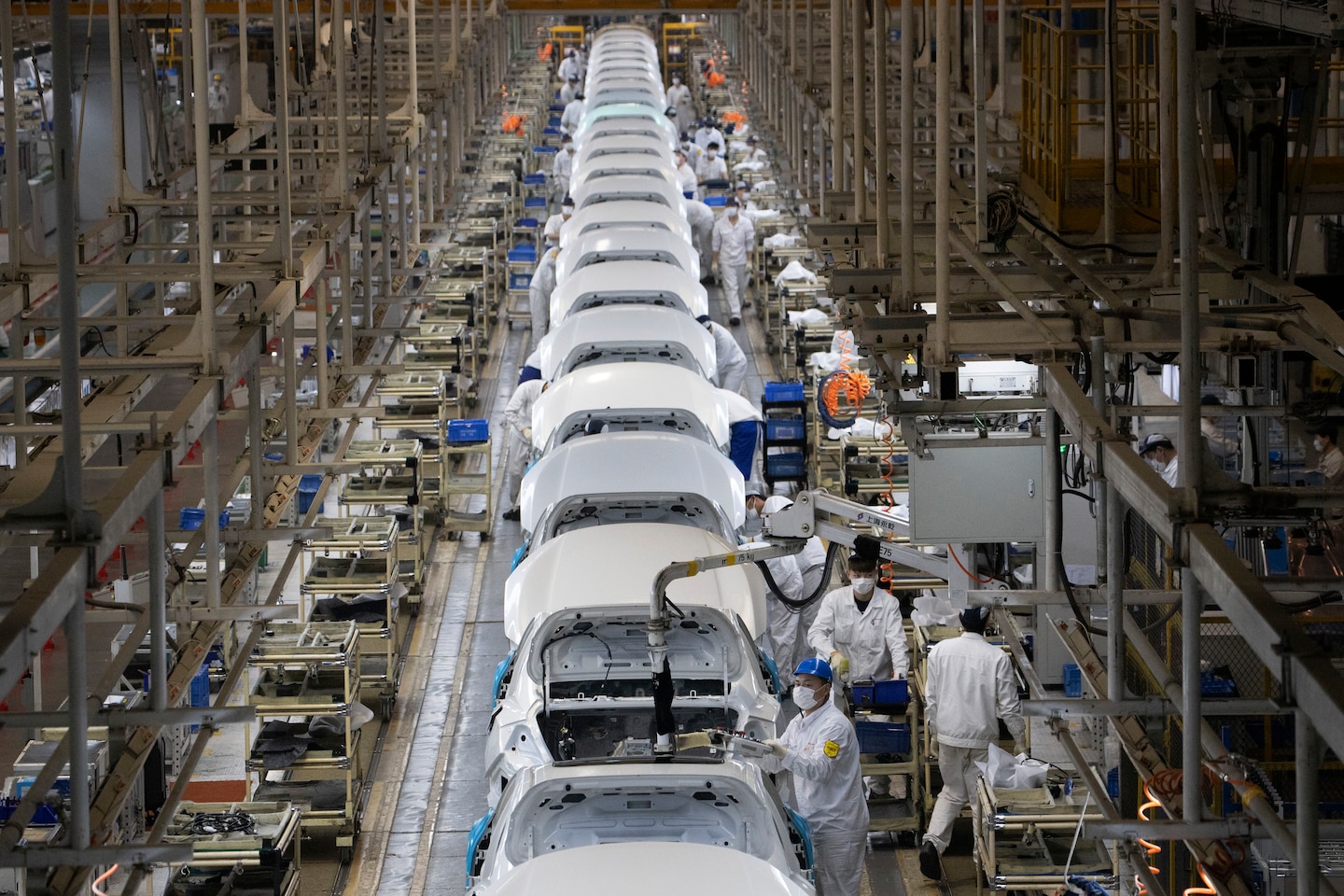Japan helps 87 companies to break from China after pandemic exposed overreliance

Indeed, alarm bells started ringing in Japanese boardrooms as soon as the novel coronavirus emerged in the Chinese city of Wuhan, a major hub of the auto parts industry.
Japanese automaker Nissan was forced to temporarily halt production at a plant in Japan in February over shortages of parts from China, while a Japanese consumer goods company, Iris Ohyama, found itself unable to meet surging local demand for masks after supplies to its factory in China were disrupted and export controls out of China were tightened.
In March, Prime Minister Shinzo Abe said the government wanted to bring production back home and diversify into Southeast Asia. The following month, the government set aside $2.2 billion in its coronavirus economic recovery package to subsidize that process.
It has now announced a list of companies that will benefit from the first round of subsidies, with 57 companies receiving a total of $535 million to open factories in Japan and 30 others paid to expand production in Vietnam, Myanmar, Thailand and other Southeast Asian countries.
China is Japan’s largest trading partner, but Japan’s Ministry of Economy, Trade and Industry (METI) has been trying for several years to reduce the country’s dependence on its giant neighbor. The 2008 global financial crisis, the 2011 northeastern Japan earthquake and the coronavirus pandemic all disrupted supply chains, while U.S.-China trade tensions are also a factor.
“We already started to see the risks of the vulnerability of the supply chain, and we encouraged industries to look at such risks and asked them to diversify their source of supply,” a METI official, who spoke on the condition of anonymity under ministry policy, said in an interview. “We think this is another chance to rethink global supply chains.”
The subsidies aim to cover suppliers of the sorts of goods needed in an emergency — such as masks — as well as industries where supplies can be disrupted by an economic shock.
Companies that are benefiting include producers of auto and aviation parts, hygiene products such as alcohol-based sanitizers, fertilizer, medicines and paper products. Iris Ohyama was the first company to take advantage of the subsidy and is using the money to open a factory to produce masks in Sendai in northeastern Japan, to complement existing plants in the Chinese cities of Dalian and Suzhou.
“We decided to produce inside Japan a portion of the production consumed in Japan,” said Executive President Akihiro Ohyama in an interview.
Iris Ohyama has gradually been shifting production out of China in recent years, due to higher wage costs there, as well as tighter environment regulations, and recently higher tariffs to export from China into the United States.
In addition to plants in Taiwan, South Korea and Vietnam, it has opened factories in France and the United States to be closer to markets there, with plastic containers, plastic pet cages, small electrical items and masks made or soon to be made in Wisconsin, Arizona and Texas.
“I think we are at the beginning of a new phase of globalization,” Akihiro Ohyama said. “Not many companies have yet been doing what we have been doing. But going forward, I think more companies will follow.”
He said large items such as refrigerators and washing machines that involve complex supply chains will continue to be produced in China and East Asia, but other production may shift.
“I think we will see a trend, a shift in producing goods in large volume where personnel costs are low, to places closer to where they are consumed,” he said.
Akihiro Ohyama said he viewed the trend very positively, with local production providing local jobs, and less shipping benefiting the environment.
For Japanese automakers, though, the shift may be less marked; most have weathered the initial virus shock and decided to remain in China.
A survey of Japanese companies, subsidiaries and affiliated companies in China conducted by the Japan External Trade Organization found 22 percent saying in April they planned to expand their business in China, up nearly seven percentage points from March. A similar survey found just 5.6 percent considering relocating out of China, down from 9.6 percent in March.
Indeed, Damien Ma of the MacroPolo think tank argued in a commentary in June that East Asia supply chains had in general survived the coronavirus shock, largely because this part of the world has dealt with the pandemic more successfully than the West.
The METI official said it was unrealistic to bring all production home, adding that Japan’s vision is different from U.S. Trade Representative Robert E. Lighthizer’s view that the era of offshoring is over. Instead, Japan wants a combination of domestic and overseas production, together with international cooperation — especially when it comes to emergency supplies.
“We are not retreating from globalization, but we have to update globalization,” he said. “Japanese companies have to adjust to that new normal, but globalization is still on the way.”
Akiko Kashiwagi contributed to this report.






